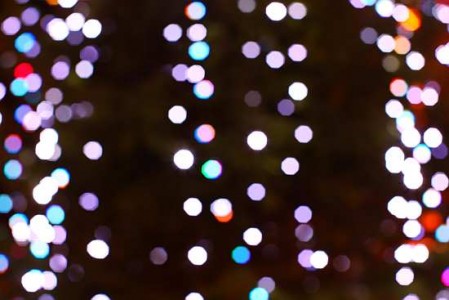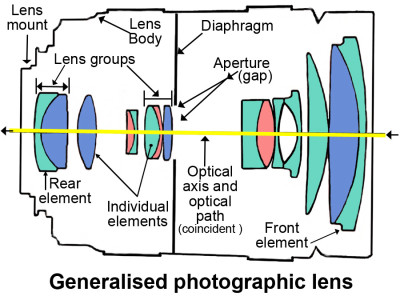
The historic 1949 Zeiss Ikon VEB Contax S, manufactured in Dresden, the first pentaprism SLR for eye-level viewing. (Wikipedia.org)
‘SLR’ stands for “Single Lens Reflex” – a type of camera. The format of the SLR is about giving the user a direct view of the scene the camera will capture. This did not happen in previous formats. So how does it work?
Before the SLR, and before the digital sensor, cameras had viewfinders to sight-up the shot. The optical path of the viewfinder was separate and parallel with the optical path for the camera lens/film. Unfortunately this meant that the viewfinder gave a view that was slightly offset and different to the scene captured by the lens/film. This made it difficult to frame the shot. The difference was called a parallax error. See diagram one. [Find out more about parallax ![]() ]
]

Diagram one: Side view of a viewfinder camera showing parallel lines of sight to the eye and the film or sensor today. (Click to view large).
The pentaprism SLR changed that. The user looked through an eyepiece that redirected the optical path through the cameras main lens and up through a ‘pentaprism’, reflecting out to the users eye. This path allowed the user to view along the same optical axis that the film, or today the sensor, uses for its exposure. Diagram two shows the optical path through the SLR to the eye.

Diagram two: Side view of an SLR camera showing the optical path to the eye through the main lens. (Click to view large).
These diagrams are simplified and not to scale, but they show the difference between the two types of optical paths. The SLR uses a pentaprism to redirect the image from the main lens to the eye. The pentaprism is a five sided prism that works like a mirror. It has two internal reflective surfaces allowing the optical path to be modified. The pentaprism performs a simple trick. It maintains the same view as you would see if not looking through the eyepiece. A mirror reflecting a right-angled view in the eyepiece would cause the user to see the scene upside down. The pentaprism reflects the light twice, and back on itself, which corrects for an inverted image.
[More on the pentaprism on Wikipedia. ![]() ]
]
When the shutter opens, the mirror in the SLR would obscure the path of the light to the film or sensor (the diagram does not show the shutter for simplicity). However, in reality, before the shutter opens the mirror is moved out of the way on a swinging arm. This movement is the ‘Reflex’ that allows the exposure to take place.
The Single Lens Reflex camera was first marketed in 1949, long before the digital sensor. So, today, the ‘film’ in the diagrams would be replaced with a sensor. However, the SLR technology is just as effective as when it was first released. It allows modern photographers to view the world as their lens and sensor would capture it. This is a simple mechanical technology which corrects the parallax errors of the earlier formats of camera. It allows us to more accurately frame and compose photographs.
Comments, additions, amendments or ideas on this article? Contact Us
or why not leave a comment at the bottom of the page…
Like this article? Don’t miss the next — sign up for tips by email.
Photokonnexion Photographic Glossary – Definitions and articles.
Definition: Digital Single Lens Reflex Camera; DSLR;
Definition: Single Lens Reflex Camera; SLR;
Definition: Reflex camera
Find out more about parallax
More on the pentaprism on Wikipedia.

Damon Guy (Netkonnexion)
See also: Editors ‘Bio’.
By Damon Guy see his profile on Google+.







